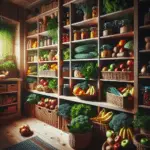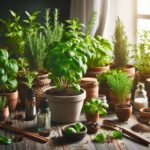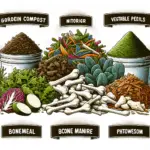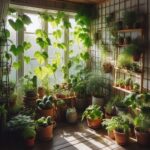There are numerous options when searching for the perfect material for succulent pots. To help guide your decision, we’ve compiled the pros and cons of the most popular materials used for plant pots. Let’s dive in to find the ideal pot that will keep your succulents thriving.
CONCRETE
Concrete pots have a porous surface, allowing them to evaporate water quickly, making them an excellent choice for cacti and succulents. It’s crucial that they also have drainage holes. Concrete planters are durable and provide excellent insulation from temperature extremes. They absorb and release heat, protecting plants from early or late frosts.
TERRACOTTA + CERAMIC
Like concrete, terracotta and ceramic are breathable and porous materials, making them perfect for indoor and outdoor use, especially in poorly ventilated spaces. Ceramic containers are stylish and provide a cozy home for your succulents. However, terracotta and ceramic pots are quite heavy and fragile, so they must be handled with care.
PLASTIC
Our plants are often grown in plastic pots with drainage holes. Plastic pots are lighter and more durable than concrete, terracotta, or ceramic ones. They come in a wide variety of colors and shapes and are generally more affordable. Although plastic pots are not as breathable as terracotta or concrete, using fast-draining soil and pots with drainage holes will help manage water drainage.
WOOD
Wood is a visually appealing material. If you enjoy DIY projects, pieces of driftwood can make beautiful succulent planters. Wood doesn’t retain heat like metal, making it suitable for succulents in outdoor areas with full sun exposure. However, wooden pots can deteriorate quickly when exposed to water or harsh conditions, so they are best suited for indoor use.
METAL
Brass and copper are trendy materials right now, and their shiny appearance makes them elegant decorative pieces. However, metal can rust, which isn’t healthy for your succulents. It’s a good idea to line metal pots with plastic to prevent water damage and protect the soil from rust contamination. Metal pots can also become extremely hot in direct sunlight, making them less suitable for outdoor use.
GLASS
Glass is often used for vases and terrariums because its transparency showcases the beauty of the plants, creating enchanting landscapes within terrariums. You can also find creative glass containers for succulents, like repurposed wine bottles or mason jars. However, glass is fragile, not very breathable, and often lacks drainage holes. It can also get dirty easily, accumulating mineral deposits from water.







